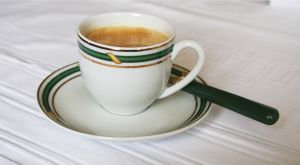Velcro is a household brand name that everyone knows. Velcro is made out of fabric hook-and-loop fasteners and has two layers which work together: one side of the fabric is covered with very tiny “hooks”, and the other side has even smaller and hairier “loops” and when the two sides are placed together, these tiny hooks get caught in the loops and hold the pieces together. When the two pieces are separated, the velcro strips make that ripping sound we are all familiar with. The Velcro company headquarters is in Manchester, New Hampshire.
Swissengineer, George de Mestral who was from Commugny, Switzerland came up with the idea to make the hook and loop fasteners in 1941. After returning home from a hunting trip with his dog up in the Alps, he noticed burrs (seeds) of burdock that kept sticking to his clothes and into the fur on his dog and he placed under a microscope and saw that hundreds and hundreds of these tiny”hooks” were catching on anything that had a loop such as in clothing, animal fur and human hair. This is when he thought of an idea to possibly bind two materials together by reversing them in a simple fashion. He just needed to somehow figure out how to duplicate all of those hooks and loops.
Even though many people refused to take his idea serious, he did gain the help of one weaver, who made two cotton strips that worked, but the cotton wore out fast, so de Mestral decided to try using synthetic fibers and nylon seemed to be the best one to use because nylon is very strong, doesn’t break down, does not rot, or attract mold, and can be made with various thickness to the threads. De Mestral started doing tests on the nylon to see how it held up and he eventually discovered that nylon forms those tiny hooks that were perfect for the hook side of the fasteners when nylon is sewn under infrared lighting. Now that he had figured out how to make the hooks, he still had to figure out how to make the looped side.His next test on nylon thread showed him that when the nylon is woven in loops and heat-treated, the nylon thread holds its shape and is resilient, but all of the little loops ha to be cut in the perfect spot so that they could be fastened and unfastened again an again. He was about to give this idea up when a new idea popped into his head. Using a pair of shears, he trimmed the tops off of the loops and this created those tiny hooks that matched up perfectly with the loops that were in the pile.
The whole process of weaving all of the tiny hooks took eight years and another year to create the loom that would trim the loops after the weaving process. After ten years of mastering his creation, he submitted his idea to receive a patent in Switzerland in 1951 and in 1955, he received his grant for the patent and after receing his patents, several shops opened in Germany, Switzerland, Great Britain, Sweden, Italy, the Netherlands, Belgium, and Canada. In 1957 he ventured out in the textile center of Manchester, New Hampshire in the United States. On August 25, 1958, Columnist Sylvia Porter made the first mention of de Mestral’s invention in her column “Your Money’s Worth” and stated that she wanted to give an exclusive report about A ‘zipperless zipper’ finally being invented. Sylvia Porter also stated in her column that she had been using the velcro fastener for days alread and it continues to fasten and unfasten perfectly every time. She also said that de Mestral’s invention was by far more revolutionary than the zipper that was created over a quarter century ago. Velek, Ltd., a firm in Montreal, acquired the exclusive right to market the product in North and South America and in Japan and American Velcro, Inc. of New Hampshire, Velcro Sales of New York, markets the “zipperless zipper” in the United States.
Sources:
Wikipedia.com







